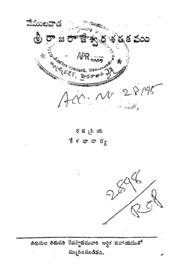
Euler Systems and Arithmetic Geometry PDF
Preview Euler Systems and Arithmetic Geometry
Euler Systems and Arithmetic Geometry Barry Mazur and Tom Weston Contents Chapter 1. Lecture 1 5 1. Galois Modules 5 2. Example : Quasi-Finite Fields 6 3. Local Fields 10 Chapter 2. Lecture 2 13 1. Discrete Valuation Rings 13 2. Local Fields 14 3. The Galois Theory of Local Fields 16 Chapter 3. Lecture 3 19 1. Ramification Groups 19 2. Witt Vectors 23 3. Projective Limits of Groups of Units of Finite Fields 24 Chapter 4. Lecture 4 27 1. The Absolute Galois Group of a Local Field 27 2. Galois Representations 31 Chapter 5. Lecture 5 35 1. Group Cohomology 35 2. Galois Cohomology 38 3. Tate Local Duality 42 Chapter 6. Lecture 6 45 1. Duality Preliminaries 45 2. Tate Local Duality 49 Chapter 7. Lecture 7 53 1. Finite/Singular Structures 53 2. Generalized Selmer Groups 57 3. Brauer Groups 60 Chapter 8. Lecture 8 65 1. Notation for Generalized Selmer Groups 65 2. A Global Pairing 67 3. The Finiteness of the Selmer Group 69 Chapter 9. Lecture 9 75 1. Abelian Varieties 75 2. Selmer Groups of Abelian Varieties 77 3 4 CONTENTS Chapter 10. Lecture 10 81 1. Kummer Theory 81 2. Cohomology of Abelian Varieties 86 Chapter 11. Lecture 11 93 1. L/K Forms 93 2. Cohomological Interpretations 95 Chapter 12. Lecture 12 99 1. Torsors for Algebraic Groups 99 Chapter 13. Lecture 13 103 1. The Picard Group of a Curve 103 2. Direct Limits of Selmer Groups 107 3. Conditions on Galois Representations 108 Chapter 14. Lecture 14 115 1. Structures on Galois Representations 115 2. Depth and Kolyvagin-Flach Systems 119 Chapter 15. Lecture 15 121 1. The Main Theorem 121 2. The Main Theorem for Rank 1 Modules 124 Chapter 16. Lecture 16 127 1. Other Versions of the Main Theorem 127 Chapter 17. Lecture 17 135 1. Modular Curves 135 2. Operators on Modular Curves 138 Chapter 18. Lecture 18 143 1. Representations on Torsion Points 143 2. Heegner Points 146 Chapter 19. Lecture 19 149 1. Hecke Operators on Heegner Points 149 Chapter 20. Lecture 20 155 1. The Euler System for X (11) 155 0 Chapter 21. Lecture 21 159 1. Local Behavior of Cohomology Classes 159 Chapter 22. Lecture 22 163 1. Completion of the Proofs 163 Bibliography 169 CHAPTER 1 Lecture 1 This lecture will be a summary of the material to be covered in the next few lectures; many details will be left until then. 1. Galois Modules Let K be a field, and fix a separable closure K . Set s (cid:48) G =Gal(K /K)= lim Gal(K /K) K s ←− K⊆K(cid:48)⊆Ks where the projective limit is over all finite Galois extensions K(cid:48) of K contained in K . We give G its usual profinite (Krull) topology. s K Let M be a G -module; that is, M is an abelian group with a left G -action. K K We will say that M is a G -Galois module if this action is continuous with respect K totheprofinitetopologyonG andthediscrete topologyonM. (These arecalled K topological G -modules in [Se-LF].) Equivalently, for each m ∈ M there must be K an open subgroup H of G which fixes m; that is, K M = MH. (cid:91) H opensubgroupofGK (Recall that MH is the subgroup of M of elements invariant under H.) In particular, if M is a finitely generated G -Galois module, then there is an K opensubgroupH ofG whichfixesallofM. (H isjusttheintersectionoftheopen K subgroups fixing each of the finitely many generators of M.) Since open subgroups of G are just Gal(K /K(cid:48)) for finite extensions K(cid:48) of K, replacing K(cid:48) by its normal s closureweseethattheG -actiononM factorsthroughGal(K(cid:48)/K)forsomefinite K Galois extension K(cid:48) of K. For future reference we will briefly clarify the relationship between G -Galois K modules and abelian sheaves for the ´etale topology on SpecK. (See [Mi-EC, p. 53] for more details.) In fact, there is an equivalence of categories between the two, althoughcertainobjects oftenbelongmore naturallyinonecategory thanthe other. Specifically, set x = SpecK and x = SpecK . Then given an abelian sheaf s F we associate to F the G -Galois module K MF =F(x)= l−i→m F(x(cid:48)) x(cid:48)→x where the direct limit is over x(cid:48) =SpecK(cid:48) for all finite Galois extensions K(cid:48) of K in K . s 0LastmodifiedSeptember4,2003 5 6 1. LECTURE 1 Intheotherdirection,wefirstrecallthatforanyx-schemeU whichisconnected and ´etale we can associate a G -set (that is, a set with a G -action) by K K U (cid:55)→Hom (x,U), x the K -valued points of U. Given a G -Galois module M, we now associate to it s K the ´etale sheaf F such that M F (U)=Hom (Hom (x,U),M) M GK x for any finite´etale U over x. We leave it to the reader to check that these associa- tionsgivetheassertedequivalenceofcategories. (Inparticularinthefirstdirection one must check that MF really is a discrete GK-module. In the second direction, one must check that F really is a sheaf and that F (x)=M.) M m If M is a G -Galois module the Galois cohomology groups K Hq(G ,M)= lim Hq(G /H,MH) K −→ K H(cid:67)GK,H open are defined. (Note that if H is open and normal in G then G /H is finite. For K K generalities on the cohomology of finite groups see [Se-LF, Chapters 7 and 8].) In particular, H0(GK,M)=MGK =HomGK(Z,M), the G -invariants of M. More generally, for any q ≥0 K Hq(G ,M)=Extq (Z,M). K GK 2. Example : Quasi-Finite Fields 2.1. Cohomology Groups. We now specialize the notions of the previous section to the case of a quasi-finite field k. (See [Se-LF, Chapter 13, Section 2] for the definition of a quasi-finite field.) When working with a quasi-finite field (which for us will almost always actually be finite), we will usually write g or even just g k for its absolute Galois group Gal(k /k). We then have an isomorphism s ∼ g =Z, k (cid:98) where Z is the profinite completion of Z with respect to its subgroups of finite index; t(cid:98)hat is, Z=lim Z/NZ. ←− (cid:98) N (Ifkisactuallyfinite,thenthereisacanonicalchoiceforthisisomorphism;namely, we want 1 ∈ Z to correspond to the Frobenius automorphism. For general quasi- finite fields w(cid:98)e do not have such a canonical choice.) Fix one such isomorphism and let ϕ∈g correspond to 1. In this setting a g -Galois module M is simply an k k abelian group M with an automorphism ϕ such that every orbit of ϕ is finite. Thecohomologytheoryinthiscaseisquitesimple, atleastwhenM istorsion. It is determined by the exact sequence 0 −−−−→ Mgk −−−−→ M −−1−−−ϕ→ M −−−−→ Mgk −−−−→ 0 where M is the g -coinvariants M/(1−ϕ)M. (This is the largest quotient of M gk k on which gk acts trivially, just as Mgk is the largest submodule of M on which gk acts trivially.) In fact, these give the only non-zero cohomology groups. 2. EXAMPLE : QUASI-FINITE FIELDS 7 Theorem 2.1. If k is a quasi-finite field and M is a torsion g -Galois module, k then there are natural isomorphisms Mgk q =0; Hq(gk,M)=Mgk q =1; 0 q ≥2. In particular, given a g -module map f :M →N the following diagrams commute: k H0(g ,M) −−−f−→ H0(g ,N) k k ∼= ∼= M(cid:121)gk −−−f−→ N(cid:121)gk H1(g ,M) −−−f−→ H1(g ,N) k k ∼= ∼= M(cid:121) −−−f−→ N(cid:121) gk gk where the horizontal maps in each case are the natural maps induced by f. Proof. See [Se-LF, Chapter 13, Section 1]. (cid:3) In fact, somewhat more is true: suppose we are given an exact sequence 0→M →N →P →0 of g -Galois modules. Consider the exact commutative diagram k 0 0 0 (cid:15)(cid:15) (cid:15)(cid:15) (cid:15)(cid:15) (cid:47)(cid:47) (cid:47)(cid:47) (cid:47)(cid:47) 0 Mgk Ngk Pgk (cid:15)(cid:15) (cid:15)(cid:15) (cid:15)(cid:15) (cid:47)(cid:47) (cid:47)(cid:47) (cid:47)(cid:47) (cid:47)(cid:47) 0 M N P 0 1−ϕ 1−ϕ 1−ϕ (cid:15)(cid:15) (cid:15)(cid:15) (cid:15)(cid:15) (cid:47)(cid:47) (cid:47)(cid:47) (cid:47)(cid:47) (cid:47)(cid:47) 0 M N P 0 (cid:15)(cid:15) (cid:15)(cid:15) (cid:15)(cid:15) (cid:47)(cid:47) (cid:47)(cid:47) (cid:47)(cid:47) Mgk Ngk Pgk 0. (cid:15)(cid:15) (cid:15)(cid:15) (cid:15)(cid:15) 0 0 0 The horizontal arrows in the first and last rows are either obvious or come from functoriality,dependingonwhichyouprefer. Thesnakelemmanowyieldsanexact sequence 0→Mgk →Ngk →Pgk →Mgk →Ngk →Pgk →0. In particular, we obtain a boundary map Pgk →Mgk. 8 1. LECTURE 1 Proposition 2.2. In the situation above, the diagram H0(g ,P) −−−−→ H1(g ,M) k k ∼ ∼ = = P(cid:121)gk −−−−→ M(cid:121)gk commutes, where the top and bottom maps are the boundary map in cohomology and the map constructed above respectively. Proof. Thisfollowseasilyfromtheexplicitisomorphismsof[Se-LF,Chapter 13, Section 1]. (cid:3) 2.2. CupProducts. Wecontinuetoassumethatkisaquasi-finitefield(with a fixed topological generator ϕ of g ) and that M is a torsion g -module. Since k k mostofthecohomologygroupsofM aretrivial,thecupproductstructuremustbe particularly simple. (Recall that for any profinite group G and discrete G-modules M and N, the cup product is a pairing Hi(G,M)⊗Hj(G,N)→Hi+j(G,M ⊗N) for any i,j ≥ 0. See [AW, Section 7]. Recall that if M and N are G-modules, then M ⊗N is made into a G-module by setting g(m⊗n) = gm⊗gn.) Using Theorem 2.1 it is easy to describe the non-trivial cup product pairings for g . k Proposition 2.3. For i=j =0 the cup product is simply the natural map Mgk ⊗Ngk →(M ⊗N)gk. Similarly, for i=1,j =0 the cup product is the natural map Mgk ⊗Ngk →(M ⊗N)gk. Proof. This follows easily from the definition of cup product and the usual isomorphisms. (cid:3) We can use the above proposition to determine the Pontrjagin dual of M. Recall that this is defined to be M∨ =Hom(M,Q/Z). (As always, if G is a group and M and N are G-modules, Hom(M,N) is given a G-module structure by (gf)(m) = gf(g−1m), f ∈ Hom(M,N), g ∈ G, m ∈ M. In particular, the G-invariants of Hom(M,N) are precisely the G-equivariant homomorphisms.) Proposition 2.4. Let M and N be finite g -Galois modules. Suppose that k there is a perfect pairing M ⊗N →Q/Z. (This is equivalent to N ∼=M∨.) Then the induced cup product pairings Hi(g ,M)⊗H1−i(g ,N)→H1(g ,M ⊗N)→H1(g ,Q/Z)=Q/Z k k k k are also perfect pairings for i=0,1. Proof. This follows easily from Proposition 2.3. (cid:3) 2. EXAMPLE : QUASI-FINITE FIELDS 9 2.3. Finite Fields. Wenowspecializetothecasewherek isafinitefield. Set p=chark and q =pf =|k|. Since k is finite it is perfect and we have k =k, the s algebraic closure of k. Furthermore, in this case we have a canonical isomorphism g →Z k (cid:98) given by sending the Frobenius automorphism ϕ to 1. (We normalize ϕ so that it sends x to xq.) For every n≥1 there is a unique extension k of k of degree n; we n will write g for the Galois group Gal(k /k). It is the unique (cyclic) quotient of n n g of order n. k Wehave|k |=qn;setw =|k∗|=qn−1. Foranymdividingnwehavenorm n n n maps k∗ −N→k∗ ; n m theseareinfactsurjective. (See[Fr,Section7,CorollarytoProposition3].) Define ∆ to be the projective limit of the k∗ under these maps. ∆ is a g -module, k n k k although it is not a g -Galois module in the sense of Section 1. k Proposition 2.5. ∆ is (very non-canonically) isomorphic to Z , where k (cid:81)l(cid:54)=p l the product is over all primes l not equal to p. Proof. First note that the Chinese remainder theorem shows that the above product is simply the projective limit lim Z/NZ, ←− N,(N,p)=1 the limit taken over only those N relatively prime to p. Further, note that for any N relatively prime to p we can find a w with N dividing w . The proposition n n now follows easily from the fact that ∆ is a projective limit of cyclic groups of all k orders prime to p by surjective maps. (cid:3) The proposition implies that for any finite extension k(cid:48) of k, ∆k(cid:48) and ∆k are abstractly isomorphic. In fact, a canonical isomorphism is given by the norm map. (This is one case where it is much more natural to think of things in terms of´etale abelian sheaves.) They are even isomorphic as gk(cid:48)-modules; since gk doesn’t act on ∆k(cid:48), this is the best we could hope for. In any event, this leads one to consider ∆ . Here one is able to use roots of unity to construct a canonical isomorphism F p ∼ ∆Fp =(cid:89)Zl(1), l(cid:54)=p where Z (1) is the Tate module of the l-power roots of unity. That is, l Z (1)=lim µ , l ←− ln n the maps µ →µ ln+1 ln being the lth-power map. Note that the Z (1) notation is slightly misleading; Z (1) l l is not canonically isomorphic to Z as an abelian group. Z (1) is called the Tate l l twist of Z ; g acts on it simply by the cyclotomic action. l k 10 1. LECTURE 1 3. Local Fields We continue with the notation of the previous section: k is a finite field of characteristic p and order q. Recall that to k one can associate the ring of Witt vectors W(k)={(a ,a ,a ,...)|a ∈k} 0 1 2 i whichismadeintoaringusingcertainuniversalpolynomials. (See[Se-LF,Chapter 2, Section 6]. With some effort they can be reconstructed by attempting to model the operations in Z .) W(k) has two natural operators F and V given by p F : (a ,a ,a ,...) (cid:55)→ (ap,ap,ap,...); 0 1 2 0 1 2 V : (a ,a ,a ,...) (cid:55)→ (0,a ,a ,a ,...). 0 1 2 0 1 2 Clearly F and V commute, and in fact VF =FV is simply multiplication by p in W(k). It turns out that W(k) is a complete, absolutely unramified (that is, with uniformizer p) discrete valuation ring with residue field k. Now, consider the units W(k)∗. They naturally sit in an exact sequence 0→1+pW(k)→W(k)∗ →k∗ →0, where the map W(k)∗ → k∗ is reduction modulo p. Since 1+pW(k) is pro-p and k∗ has order prime to p it follows that the sequence splits, so that k∗ lifts uniquely to W(k)∗ and W(k)∗ ∼=k∗×(1+pW(k)). The splitting map k∗ → W(k)∗ is called the Teichmuller character and denoted ω. (Its existence can also be seen more directly; for example, it follows easily from Hensel’s lemma. (See [Se-LF, Chapter 2, Section 2.2, Lemma] or [Cas, Appendix C].) Alternatively, one can check that k∗ is simply the roots of unity µ(W(k)).) The same construction applies to k ; W(k ) is also an absolutely unramified n n complete discrete valuation ring. Letting K be the quotient field of W(k), K the n quotient field of W(kn), W(k) the union of all of the W(kn)’s and K∞ its fraction field, we obtain a diagram K(cid:65)(cid:65) ∞(cid:58) (cid:95) (cid:4) (cid:4) (cid:58) (cid:4) (cid:4)(cid:4) (cid:58) (cid:16)(cid:48) (cid:4)(cid:4) (cid:58) (cid:2)(cid:2)(cid:4)(cid:2)(cid:2)(cid:4)(cid:4)(cid:4)(cid:4)(cid:4)W(cid:4) (k(cid:58))(cid:58)(cid:58)(cid:58) (cid:16)(cid:48) (cid:4)(cid:4)(cid:4)(cid:4)(cid:4)(cid:4)(cid:4)K(cid:66)(cid:66) n(cid:58)(cid:58)(cid:58)(cid:58)(cid:58)(cid:58)g(cid:58)n(cid:58) (cid:95)gk (cid:95) k (cid:58)(cid:58)(cid:58)(cid:58) (cid:1)(cid:1)(cid:4)(cid:1)(cid:1)(cid:4)(cid:4)(cid:4)(cid:4)W(cid:4)(cid:4)(kn(cid:58)(cid:58))(cid:58)(cid:58)(cid:58)(cid:58)(cid:58) (cid:16)(cid:48) (cid:4)(cid:4)(cid:4)(cid:4)(cid:4)(cid:4)(cid:4)(cid:65)(cid:65)K gk kn(cid:59)(cid:59)(cid:59)(cid:59)(cid:59)g(cid:59)n(cid:59) (cid:1)(cid:1)(cid:3)(cid:1)(cid:1)(cid:3)(cid:3)(cid:3)(cid:3)(cid:3)W(cid:3) (k) (cid:95) k This construction can be shown to give all of the unramified extensions of K. (See [Se-LF, Chapter 3, Section 5]. Note that this approach only works for absolutely unramified K.)
Description:The list of books you might like

Do Epic Shit

What Happened to You?

Better Than the Movies

The 5 Second Rule: Transform your Life, Work, and Confidence with Everyday Courage
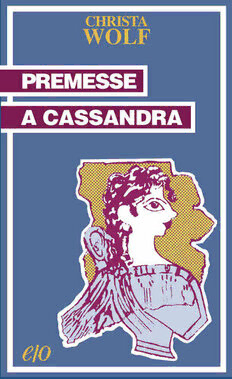
Premesse a Cassandra

ERIC EJ1069138: Taking a Closer Look at Reading Online

Slaves of Socorro
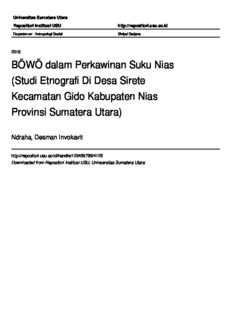
böwö dalam perkawinan suku nias departemen antropologi sosial

Daireen complete by Frank Frankfort Moore
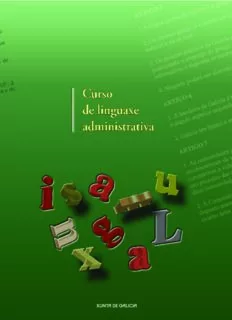
C linguaxe admin Fut
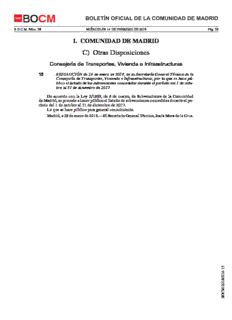
C) Otras Disposiciones

C. POPULATION, EMPLOYMENT, AND HOUSING - Amazon S3

C opyleft—the economics of Linux and other open source - Angelfire
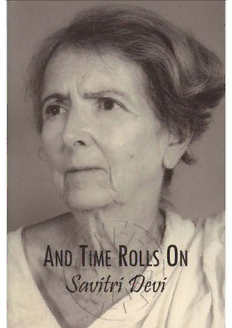
And Time Rolls On
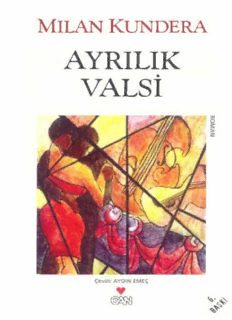
ayrılık valsi
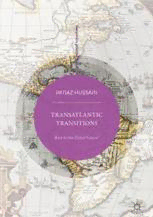
Transatlantic Transitions: Back to the Global Future?
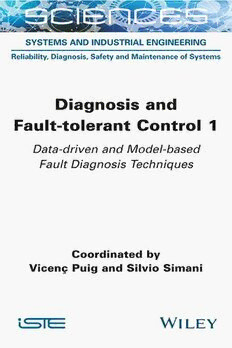
Diagnosis and Fault-tolerant Control, Volume 1: Data-driven and Model-based Fault Diagnosis Techniques
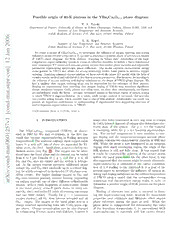
Possible origin of 60-K plateau in the YBa2Cu3O(6+y) phase diagram
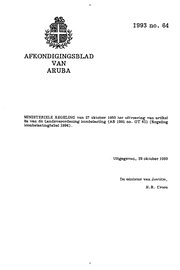
Afkondigingsblad van Aruba 1993 no. 64
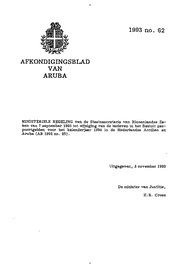
Afkondigingsblad van Aruba 1993 no. 62
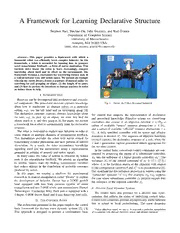
DTIC ADA459921: A Framework for Learning Declarative Structure

Towards an understanding of Gambian teachers' lives and careers. PhD thesis, University of ...
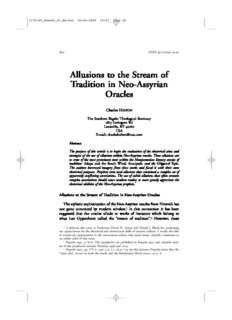
Allusions to the Stream of Tradition in Neo-Assyrian Oracles
